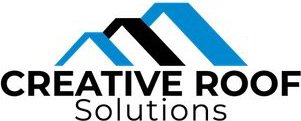Guide to Commercial Roof Repair: Costs & Solutions
A commercial roof is more than a structure; it is the primary shield protecting your business operations, inventory, and personnel. When this critical asset is compromised, the impact on your bottom line can be significant. For property managers and business owners in Washington, understanding the signals of roof distress is the first step toward effective asset management. This guide provides a clear path for identifying common roof problems, analyzing the financial implications of a commercial roof repair, and making informed decisions to safeguard your investment.
Table of Contents
Signs Your Commercial Roof Needs Repair
Early detection of roof damage can prevent minor issues from escalating into major capital expenditures. Be vigilant for these common indicators that your commercial property requires professional attention.
Leaks and Water Intrusion: The most obvious sign. Look for water stains on ceilings, damp insulation, or active dripping after rainfall.
Punctures and Membrane Damage: Foot traffic, dropped tools, or flying debris can cause tears, punctures, or deep scratches in roof membranes like TPO, PVC, or EPDM.
Storm and Wind Impact: After a severe storm, inspect for missing or peeled-back roofing material, dented flashing, or scattered debris. Wind can create an uplift effect that weakens seams and fasteners.
Flashing Failures: The metal seals around vents, skylights, and chimneys are frequent failure points. Check for rusted, bent, or improperly sealed flashing.
Ponding Water: Any water that remains on a flat roof for more than 48 hours indicates a drainage problem. This excess weight stresses the structure and accelerates material decay.
Material Degradation: Look for blistering, bubbling, or cracking on the roof surface. These are often symptoms of trapped moisture or age-related UV damage.
Addressing these issues promptly is key to controlling costs and extending the service life of your building's most important asset.
Repair or Replace? A Strategic Cost-Benefit Analysis
When faced with significant damage, business owners must decide between repair and a full replacement. This decision hinges on a careful analysis of age, damage extent, and long-term business goals.
| Factor | Consider Repair When... | Consider Replacement When... |
|---|---|---|
| Age of Roof | The roof is in the first half of its expected service life. | The roof is nearing or has passed its warrantied lifespan. |
| Extent of Damage | Damage is localized to less than 25-30% of the roof surface. | Damage is widespread, systemic, or affects the underlying structure. |
| Repair History | The roof has required few or no previous major repairs. | The roof requires frequent and increasingly costly repairs. |
| Future Plans | You plan to keep the building for the short-to-medium term | You are planning for long-term ownership or want to improve property value. |
| Budget | Immediate capital outlay needs to be minimized. | A long-term investment is financially viable and preferred |
A thorough inspection by a qualified commercial roofing contractor is essential to making the right choice. Sometimes, a targeted repair can extend a roof's life for several years, while in other cases, it's merely postponing the inevitable. Explore our new roof installation services for more information on full system overhauls.
The Cost of Commercial Roof Repair: A Breakdown
Commercial roofing represents a substantial part of the construction industry, accounting for 57% of the total market (VipeCloud). The cost of a commercial roof repair can vary widely based on several key factors:
Roofing Material: Repairing a complex metal roofing system will differ in cost from patching a TPO or modified bitumen roof.
Extent of Damage: A simple puncture patch is far less expensive than repairing a large section of wind-torn membrane.
Labor and Accessibility: The complexity of the job and the ease of access to the roof will influence labor costs.
Underlying Damage: If water has penetrated the insulation or decking, the cost will increase to include replacing these structural components.
Budgeting for Storm Damage Repair
Storms are a leading cause of roof damage in Washington. According to HomeAdvisor, the average cost to repair storm damage is $12,346, with costs ranging from $2,686 to $22,059. This wide range reflects the varying severity of hail impacts, wind uplift, and water intrusion. A trusted contractor can help you document damage for insurance claims and provide a precise estimate.
Your Action Plan for a Roofing Emergency
A sudden, catastrophic roof failure requires a swift and methodical response to reduce further damage.
Prioritize Safety: Immediately restrict access to the affected area. If there are electrical hazards from water intrusion, shut off power to that section of the building.
Control Interior Damage: Use buckets and tarps to manage water and protect assets, equipment, and inventory below the leak.
Document Everything: Take clear photos and videos of the roof's exterior damage and the interior consequences. This documentation is crucial for insurance claims.
Contact a Professional: Call a reputable commercial roofer with a history of emergency response. Do not allow your maintenance staff to go on a potentially unsafe roof.
Proactive Maintenance: Your Best Defense
The most cost-effective approach to roofing is preventative. A scheduled maintenance plan is an investment in longevity and budget certainty.
Semi-Annual Inspections: Have your roof professionally inspected every spring and fall to identify and address minor issues before they worsen.
Keep it Clean: Regularly clear debris from the roof surface and ensure that drains, scuppers, and gutters are free of blockages. See how our rain gutter services can help.
Check the Seals: Pay close attention to the sealant around all roof penetrations, as this is a common point of failure.
A proactive plan can double the service life of your roof, offering a substantial return on investment by deferring the high cost of a full replacement.
Selecting a Commercial Roofing Contractor
Choosing the right partner is as critical as the repair itself. Your contractor should be a trusted advisor who embodies values of honesty, safety, and clear communication. Use this checklist to vet potential partners:
Licensed and Insured: Confirm they hold the proper Washington state licensing and carry both liability and workers' compensation insurance.
Local Experience: A contractor familiar with Snohomish, King, and Skagit County weather patterns and building codes is invaluable.
Proven Track Record: Ask for a portfolio of similar commercial projects and speak with past clients.
Detailed, Written Estimates: A professional estimate should clearly itemize all costs for labor and materials.
Commitment to Safety: Inquire about their safety protocols and track record. As a company founded on public safety values, this is a non-negotiable standard for us. Learn more about our company values.
Clear Communication: Your contractor should be responsive, answer your questions directly, and keep you informed throughout the project.
Protect Your Investment with an Expert Partner
Your commercial roof is a dynamic system that requires expert knowledge to manage effectively. From identifying subtle signs of wear to executing a complex storm damage repair, every decision impacts your property's value and operational stability. By understanding the fundamentals of repair costs, maintenance, and contractor selection, you are equipped to protect your asset with confidence.
Ready to secure your commercial property? Request your free, no-obligation estimate from the experts at Creative Roof Solutions today.
Frequently Asked Questions
How often should a commercial roof be inspected?
A commercial roof should be professionally inspected at least twice a year, typically in the spring and fall. An additional inspection is highly recommended after any major weather event, such as a severe windstorm or hailstorm.
What is the average lifespan of a commercial roof?
The lifespan varies greatly by material. For example, TPO and EPDM single-ply membrane roofs typically last 20-30 years. Metal roofing systems, known for their durability, can last from 40 to 70 years with proper maintenance.
Can my commercial roof be repaired in the winter?
Yes, commercial roof repair is possible during the winter months in Washington. However, it requires specialized techniques and materials formulated for low temperatures to ensure proper adhesion and curing. It's a job best left to experienced professionals.
Will my business operations be disrupted during the repair?
A professional commercial roofing contractor will work closely with you to create a plan that reduces disruption. This may involve scheduling work during off-hours or on weekends and implementing strict safety and debris-management protocols to keep your operations running smoothly.




